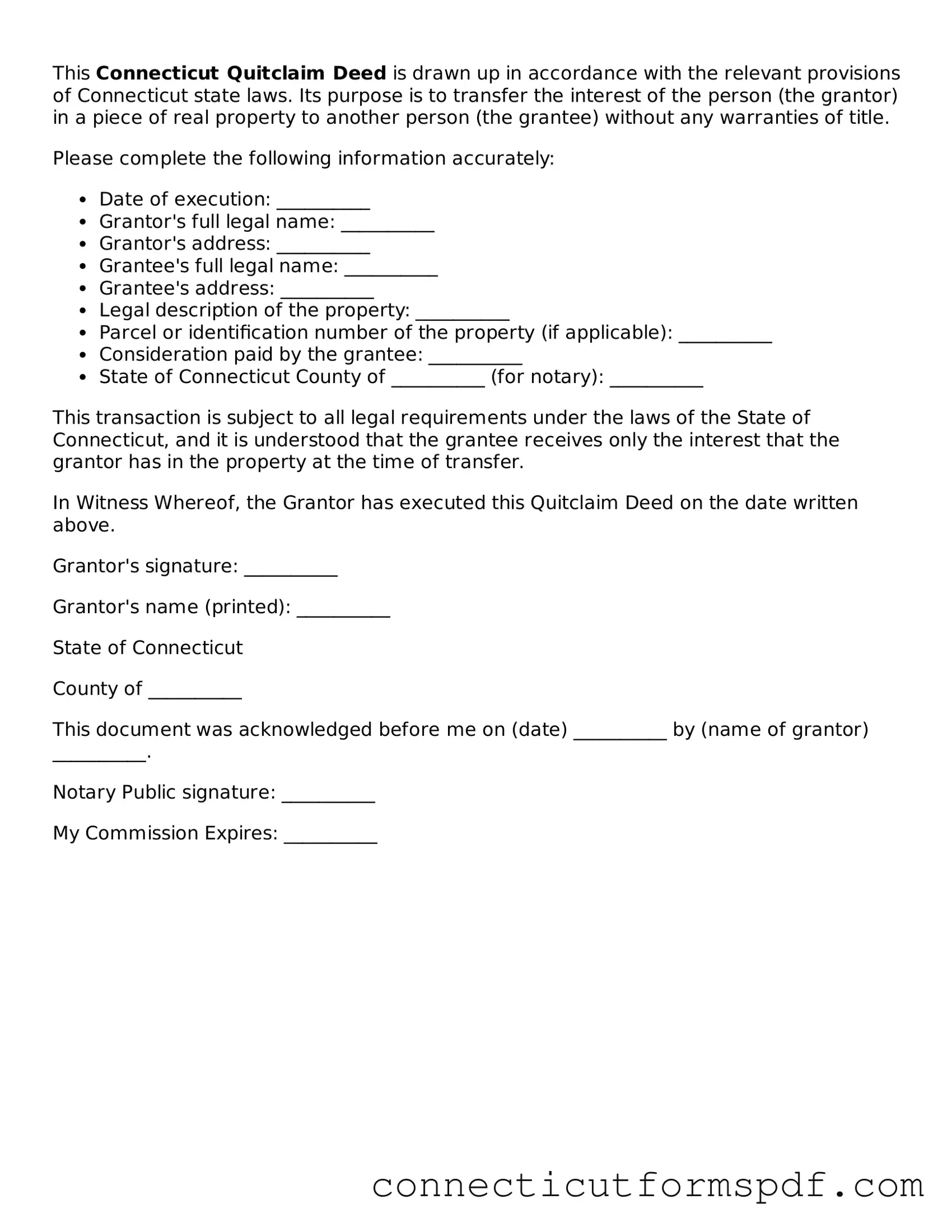This Connecticut Quitclaim Deed is drawn up in accordance with the relevant provisions of Connecticut state laws. Its purpose is to transfer the interest of the person (the grantor) in a piece of real property to another person (the grantee) without any warranties of title.
Please complete the following information accurately:
- Date of execution: __________
- Grantor's full legal name: __________
- Grantor's address: __________
- Grantee's full legal name: __________
- Grantee's address: __________
- Legal description of the property: __________
- Parcel or identification number of the property (if applicable): __________
- Consideration paid by the grantee: __________
- State of Connecticut County of __________ (for notary): __________
This transaction is subject to all legal requirements under the laws of the State of Connecticut, and it is understood that the grantee receives only the interest that the grantor has in the property at the time of transfer.
In Witness Whereof, the Grantor has executed this Quitclaim Deed on the date written above.
Grantor's signature: __________
Grantor's name (printed): __________
State of Connecticut
County of __________
This document was acknowledged before me on (date) __________ by (name of grantor) __________.
Notary Public signature: __________
My Commission Expires: __________
